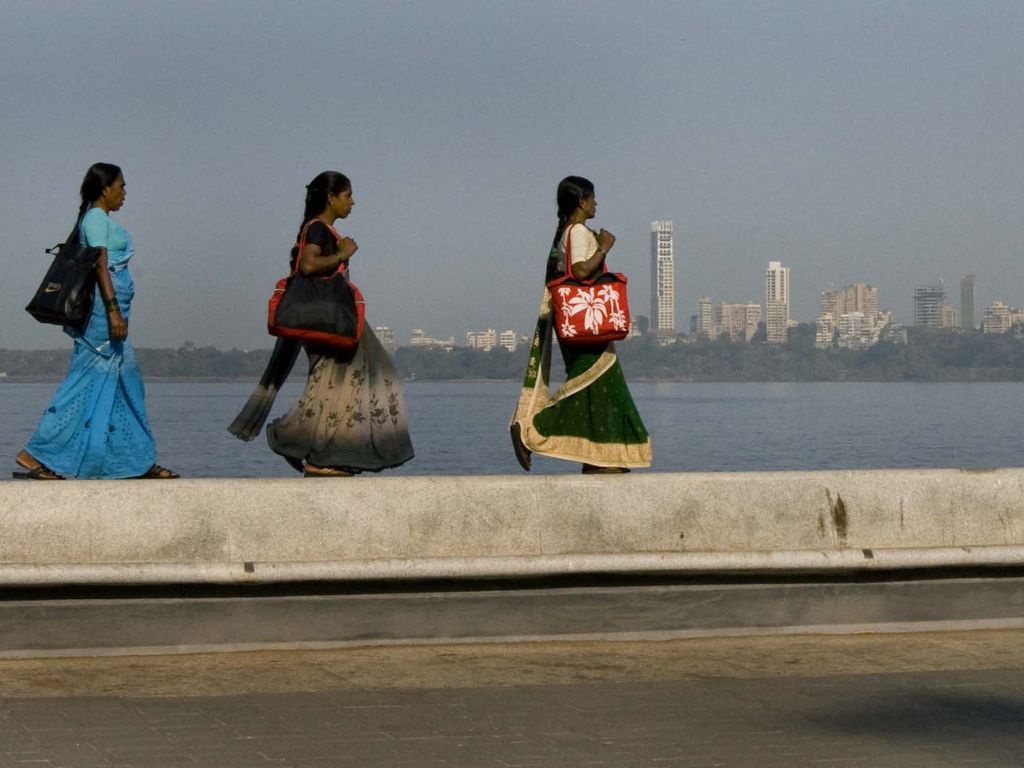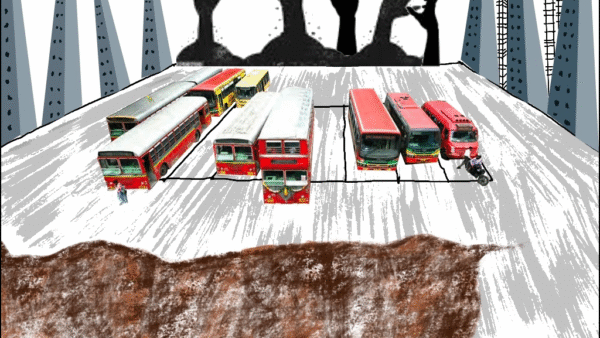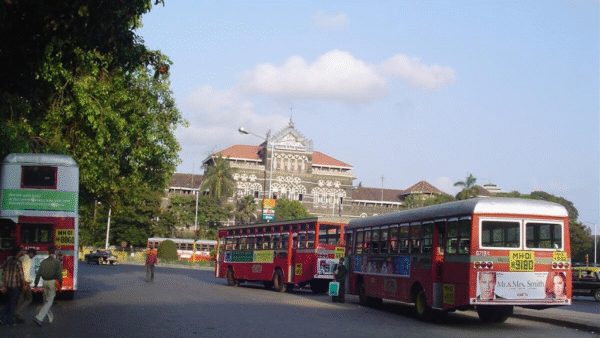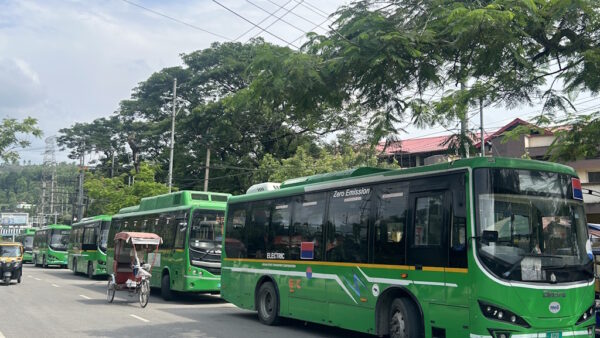The greatest of myths about cities, enduring across centuries and geographies, is that they are gender-neutral.
With concrete high-rises and grand carriageways, cities are believed to offer opportunity and anonymity to people beyond the shackles of class, caste, religion, and gender that non-urban life places on them. That’s how rags-to-riches success stories take shape which, in turn, reinforce many myths about cities. But cities are far from neutral – gender, caste, religion, or class – or the level playing field they are marketed as.
Cities mean different things to women than they do to men, women interact with cities differently, their use of urban space and services is not the same as that of men. In fact, not all women have the same relationship with their cities; her class, caste, religion, education, and work layer a woman’s experience of the city in such inter-connected ways that it is unrealistic to adopt one framework of gender and the city. Add sexual orientation to the mix; there are many, often competing, frameworks. But even if, for the sake of argument, these differences are disregarded and all genders bundled together in a tent, it follows that planning cities must take into account the gender factor. It does not.
“Our cities are patriarchy written in stone, brick, glass and concrete,” said Jane Darke, feminist geographer. Cities reflect societies and power structures – when planned and made exclusively or mostly by men without factoring in gender or the feminist perspective, cities best serve men with social and economic power. The perspective is reflected – and its absence felt, deeply – in every aspect of women’s lives: In the choices in education, work and leisure pursuits; in the major life decisions they make; in their and their family’s approach to independence; their home address; their expenses on transport, and so on. This holds true for all non-binary genders too.
If the feminist perspective or other genders’ perspectives are missing, it can usually be traced back to their absence in the urban planning process; the few who get to the table find their voices muted. If cities are to be more gender-supportive – not merely gender-friendly but supportive – then the long and hard work must begin with urban plans.
Work, all forms of work women do in a city, is a useful lever to begin with the intervention with.
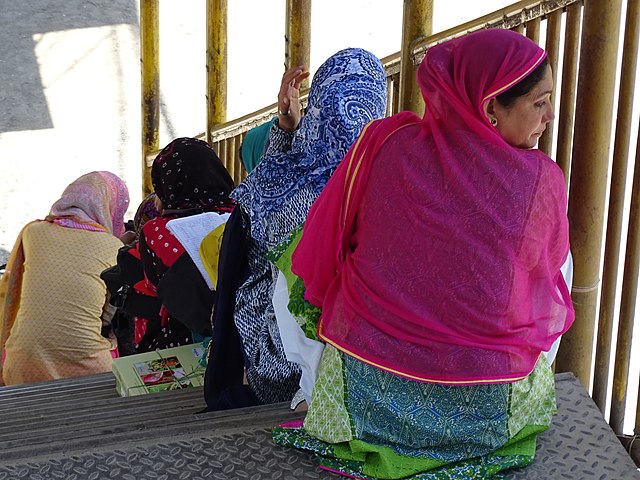
Photo: Adam Jones/ Creative Commons
Portrait of women’s work and city
Work is central to the way women interact with the city. There are women in the formal sector who use planned spaces and travel options, but there are scores more in informal sectors, home-based work and care work. Even if urban planning includes gender, it speaks of women in the formal sector, the rest are barely accounted for. Informality of any kind, in work or otherwise, falls outside planning.
It is well documented that women’s participation in the labour force has been declining. In the last two decades up to the pandemic, when India’s economic growth excited the rest of the world and the absolute number of poor people declined, the number of women in the workforce – especially in urban areas – fell sharply, leaving the country with one of the lowest rates of female participation in labour force (FPLF) in the world. Against a global average of 45 per cent, India clocked 24.5 per cent in 2019; the Periodic Labour Force Survey 2020 showed that only 18.6 per cent of women in the working-age were in the labour force – three times lower than men.
This was consistent with the Census Survey 2011 and National Sample Survey Organisation reports. Six of every 10 working women were in agriculture; in the cities, the manufacturing sector absorbed the maximum number of women followed by informal work and domestic labour. Contrary to the perception that a number of women in cities were employed, the highest percentage of women at work were in Bengaluru and Coimbatore – one of every four – while Mumbai and Kolkata had about 16 to 18 per cent, and Delhi only around 11 per cent. Women in the formal sector workforce contend with the gender pay gap and are often not entitled to social or security benefits.
In cities, a large section of women – nearly 55 per cent or one in every two – makes the informal workforce. They are rarely spoken about or provided for in urban plans. “Home-based work constitutes a significant share – 22.7 per cent – of the female workforce in urban India. There is a growing trend of outsourcing work to homes, making home-based workers the largest worker group in urban India… As part of the urban working poor, home-based workers live in informal settlements characterized by overcrowding and poor infrastructure,” stated a report from WIEGO (Women in Informal Employment: Globalising and Organising)[1] Besides home-based work, women labour on construction sites, on pavements as street vendors, as domestic help and so on.
The city as a factor
In studies done on the disturbing gender gap in the workforce, a number of factors came to the fore: rising family incomes which prompts women to drop out of the job market, marriage which limits their mobility and choice, childcare which takes their time and energy, limited or negligible transport options, public safety concerns, policies and specific laws which keep women away from work. Each factor has been studied but the factor that rarely gets the attention is urban planning and spatial design, and the influence this has on women’s work choices and therefore participation in the workforce.
Are our cities designed to support and encourage women who want to undertake economically productive work, are urban plans and designs improving lives of working women or impeding them? Who designs cities, after all?
It could be something as deceptively simple as transport and mobility. Not having safe and reliable connectivity from home to the workplace limits women’s choices of what work they do; connecting diverse areas of the city with safe and reliable transport is an urban design and policy issue. Similarly, not having trust-worthy and well-equipped childcare centres restrict women’s work choices. Care work, which is real work that occupies women’s time and contributes to society, is not included in the realm of “productive” or “economic” work. Naturally, care work is not baked into urban planning, spatial design, or land use allocation. Similarly, home-based work, though widespread and sustaining scores of low-income families, is hardly accounted for in urban plans. In slums or jhuggi-jhopdis, women workers struggle to accomplish their home-based work in the cramped spaces they live in, even resettlement colonies do not have this workspace because it was not planned for.
“To imagine the city and its structures as neutral places where complicated human social relations are staged is to ignore the simple fact that people built these places,” wrote Leslie Kern, geographer and author of Feminist City: Claiming Space in a Man-Made World, explaining why she wrote it. “(The) society’s historical and ongoing ideas about proper gender roles for men and women (organised along a narrow binary) are built right into our cities – and they still matter. They matter to me as a mother. They matter to me as a busy professor who often finds herself in strange cities, wondering if it’s OK to pop into the neighbourhood pub alone. Ask any woman who’s tried to bring a pram on to a bus, breastfeed in a park, or go for a jog at night. She intuitively understands the message the city sends her: This place is not for you.”
When cities are imagined, planned, and built primarily for able-bodied men in the economically productive age group, all others who do not fit into this mould including women, trans and non-binary genders, children, persons with disabilities, and senior citizens tend to be marginalised. Within the gender spectrum, non-binary persons or the LGBTQ community struggle to be heard in conversations dominated by women or women’s groups; in the larger urban context, women struggle to be heard and claim their right over urban services.
With regard to gender and work, the two questions to ask are:
- What can a gender profile of the city and its services look like, how can it be drawn up to be fed into the next urban plan?
- How can the work done by women – all forms of informal work, labour, home-based work, care work – be mapped and used in the planning process to provide space and infrastructure?
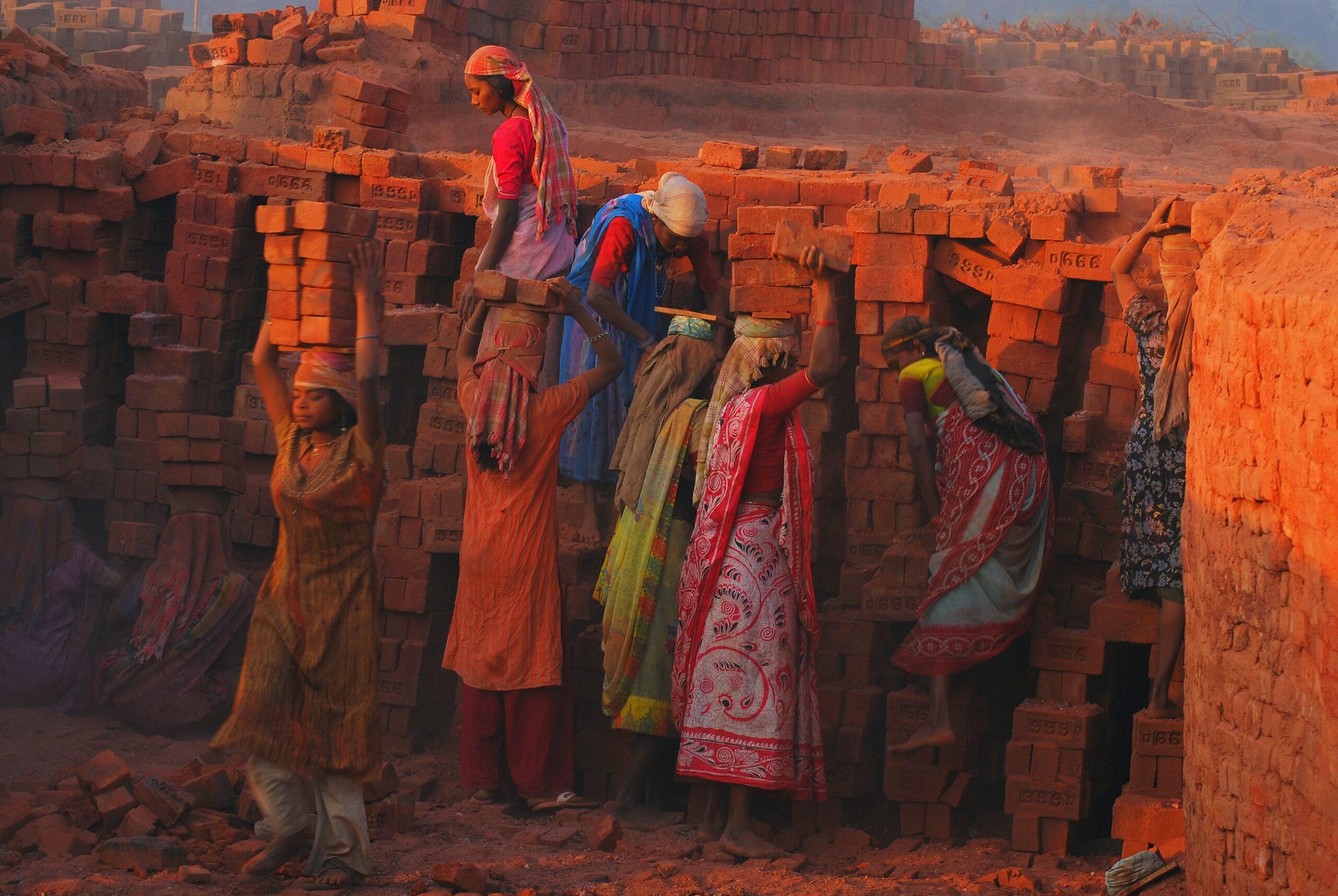
Photo: Unsplash
Twin areas of concern
In the relationship between gender and work in cities, at least two areas demand urgent attention of planners and policy makers: Housing and transport.
Even in the formal sector, jobs do not include accommodation except at the highest level; hostels are too few to make a difference and have exhaustive patriarchal restrictions. This means women, especially those migrating to cities, must find houses on their own, but paying guest accommodation or rental housing are not easy to zero in on. Single women or LGBTQ persons find it extremely difficult to secure rental accommodation and are often forced to answer intrusive questions or put up with indiscreet checks on their morality from prospective owners of houses (read more on this here).
In the informal sector, when the home and workplace are the same cramped quarters, such as in low-income neighbourhoods with home-based women workers, they face a host of challenges: Lack of adequate space and ventilation, merging of work and home boundaries placing additional stress, limited use of adjoining outer areas or public spaces which are usually taken up by men, inadequate access to public services such as piped water and sanitation facilities, limited or no access to skill centres, and so on.
The research by WIEGO Focal City Delhi and Social Design Collaborative last year showed women in home-based work doing one or more of the following tasks: stitching, embroidery and embellishment, thread-cutting, envelope making, kitchen tools making, bead work, toys packing, bindi and costume jewellery making, sandal strap and other footwear strap cutting, artificial flower making, vegetable peeling-cutting, and tag tying on goods. “The geography or spatiality of where informal workers live and work in the city is very important for policy advocacy,” stated the report.
The intersection of transport and women in cities opens up many issues: The gradual shift away from public transport to private modes, the emphasis on building carriageways more suited to private cars and few women own or drive their own, the neglect of simpler mobility options such as pavements for walking given that more than half the women commuters walk to their destinations, women’s mobility pattern which is rarely point-to-point but meanders because she has to pick up children from caretakers or purchase daily supplies on her way back home, and so on.
Any number of studies shows that more women than men walk, and more frequently too, completing a larger number of trips on foot. They need walkable pavements, pedestrian-friendly road design, gender-responsive traffic management, safe and secure roads with adequate lighting, and to invoke Jane Jacobs, enough “eyes on the street” so that streets are not deserted. Making a city safer does not only mean equipping women with martial skills and creating tech-based solutions such as Face Recognition Cameras; it demands that urban design creates mixed-use areas (known to be safer than single or exclusive-use), well-lit streets, and transport with adequate access and reliability of service.
Any which way you dice it, if urban planning does not address the issues of housing and transport, women and other genders will find their work choices – and quality of life – curtailed.
The way public spaces are created and allocated matters too; without such spaces in neighbourhoods, women and other genders find it difficult to gather for collective action or mobilisation on any issue that concerns them; without mass mobilisation and political action, their voices are rarely heeded. On another note, an urban plan that does not address ecological concerns – specifically Climate Change which has led to extreme weather events – does a disservice to gender because extreme heat and torrential rain impact the poorest of women and other marginalised groups the most; they risk losing their livelihoods and homes.
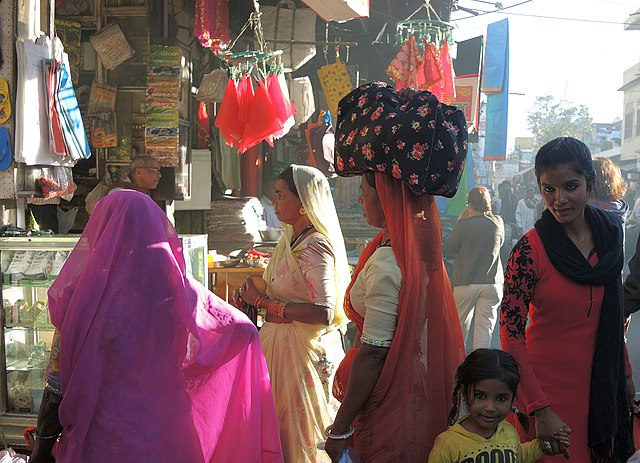
Photo: Güldem Üstün/Creative Commons
Mumbai, Delhi, and beyond
“Urban planning is not gender-neutral,” wrote the internationally-renowned urbanist Saskia Sassen, “While there has long been research on how urban systems fail to respond to women’s needs, it was only a decade ago that the subject surged. Since then, cities have been hosting initiatives addressing a version of the ‘urban planning gender gap’.” Indian cities have yet to respond to this gender gap but there is hope.
In a landmark move, the Mumbai Development Plan 2034 included, in response to a sustained campaign by a women’s collective, a gendered approach to planning. When the revised version of the DP was released in 2017, it was the first such plan in India to have a chapter exclusively addressing gender concerns and making land use provisions to facilitate a more gender-supportive city (read interview here).
The lens used was women’s workforce participation. With work as the focal point, aspects such as housing, transport, education, healthcare, childcare and other services were planned in every civic ward. Implementing it is a slow and tedious process and there is a long way to go, but a beginning has been made. Reversing gender mentions in the DP would be difficult.
Similarly, the Delhi Master Plan 2041 barely acknowledged informal settlements; home-based work and women workers were not in the picture till WIEGO built a campaign around the idea of livelihood-centred urban planning. “Only a small share of Delhi’s population (less than 15%) is engaged in formal employment. The majority of Delhi’s workers carry out their livelihoods in informal work spaces…There are over three lakh street vendors, 8 to 10 lakh construction workers, around three lakh waste pickers and others…This requires a shift from planning exclusively for the formal city, to planning also for the majority of urban workers engaged in the informal economy,” argued Shalini Sinha and Malavika Narayan.[2]
More than 30 years ago, French sociologist Henri Lefebvre reminded us that “social space is a (social) product. The space thus produced also serves as a tool of thought and of action…in addition to being a means of production it is also a means of control, and hence of domination, of power.” Urban planning is, ultimately, a political act because space in a city is about demonstrating power or consolidating it. As in other domains, women and other genders will have to agitate, negotiate, and secure their right over city space including the right to plan and allocate space they need.
Smruti Koppikar is a Mumbai-based award-winning journalist, urban chronicler, and media educator. She has more than three decades experience in newsrooms in writing and editing capacities, she focussed on urban issues in the last decade while documenting cities in transition with Mumbai as her focus. She was a member of the group which worked to include gender in Mumbai’s Development Plan 2034 and is the Founder Editor of Question of Cities.
Cover photo: Steve Evans/ Creative Commons

